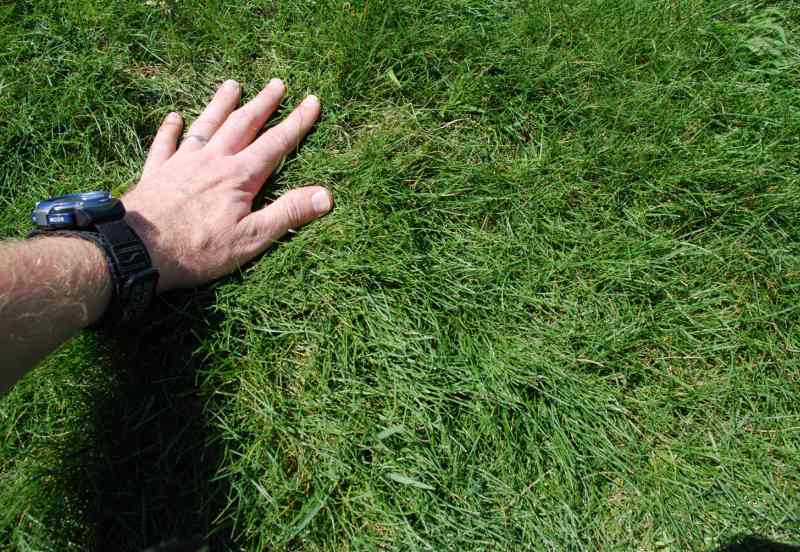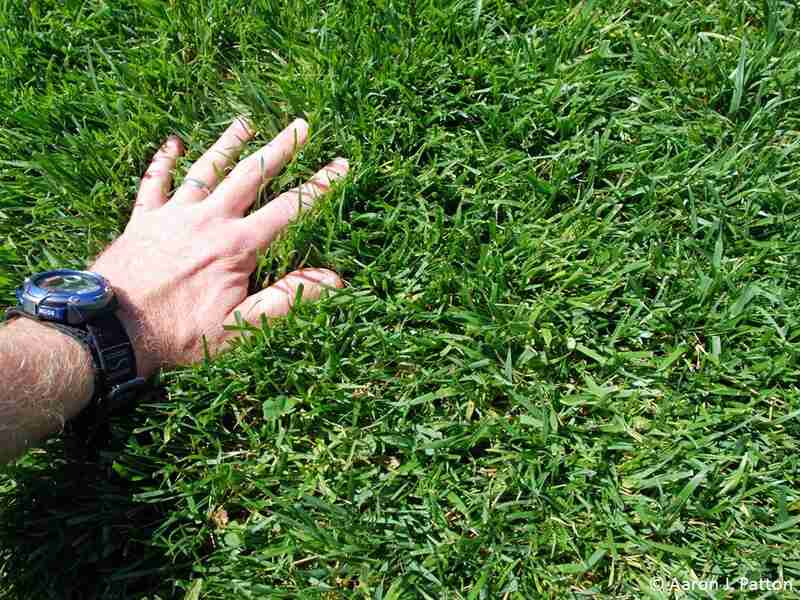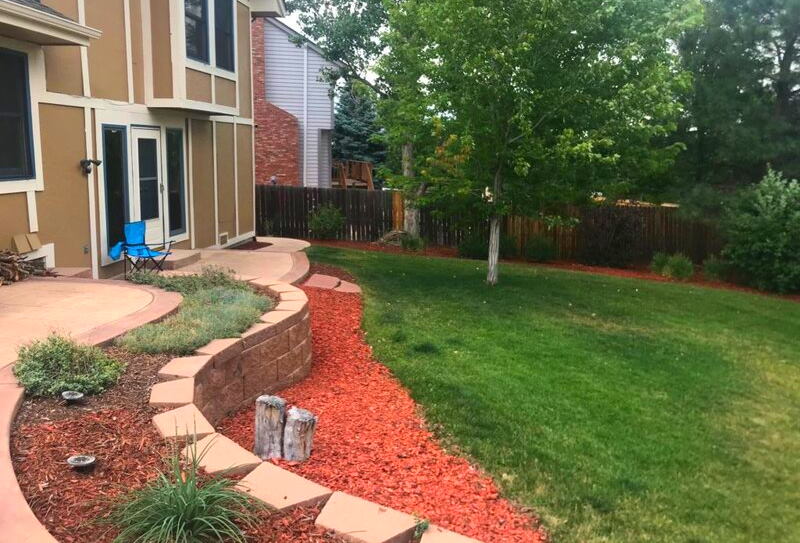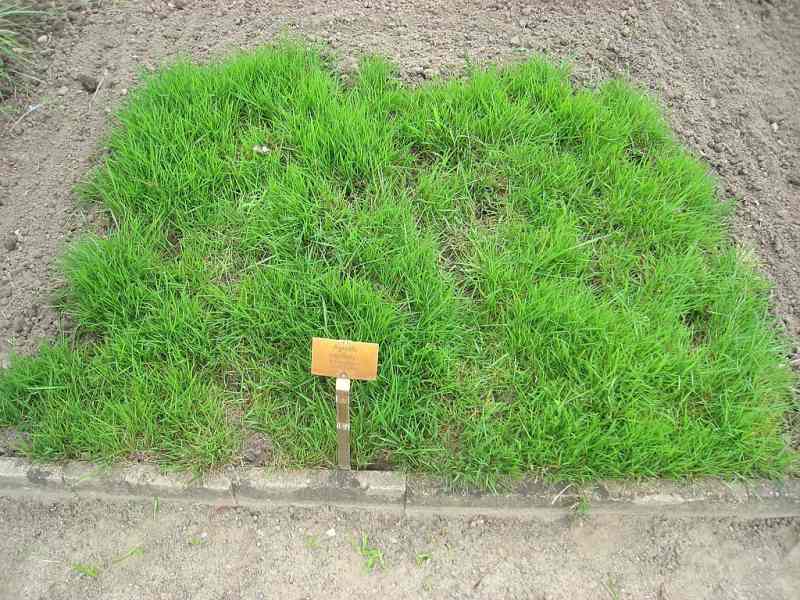5 Best Grass Seeds for Oregon
BY RELA CATUCOD | MAY 22ND, 2023 | LAWN CARE, OREGONThe Beaver State’s diverse climate, encompassing everything from the hot summers of the Willamette Valley to the cooler regions of Portland, presents homeowners with a variety of the best grass seeds for Oregon to consider for their lawns. Selecting the right type of grass seed for your landscape is crucial to ensure that it can withstand the local weather conditions and thrive in the region’s unique climate.
From barbecues and picnics to simply relaxing with your family, your lawn can be the centerpiece of your home. As such, finding the best grass seed that can flourish in your Oregon landscape is essential. In this guide, we will help you figure out the best lawn seed for your outdoor space.
- Warm-season Grass vs. Cool-season Grass
- Best Grass Seeds for Oregon
- FAQ About Oregon Grass Seeds
- Choose Plant and Grass Varieties for Your Oregon Landscape
Warm-season Grass vs. Cool-season Grass
Warm-season grasses thrive in hot summer temperatures and become dormant as temperatures drop in winter. Cool-season grasses are better suited for Oregon’s cool climate.
Cool-season grasses flourish in the cool temperatures of fall and spring, enter dormancy in summer, and maintain their green color during mild winters. However, if the winter season is cold enough, the drop in temperature may trigger winter dormancy.
Best Grass Seeds for Oregon
1. Perennial Ryegrass

Photo Credit: Dr Mary Gillham Archive Project / Flickr / CC BY 2.0
Perennial ryegrass, a popular grass seed among Oregon homeowners, is known for its fast germination, deep green color, and suitability for new lawns or overseeding existing ones. Its fine texture and rapid growth make it ideal for families who enjoy spending time outdoors.
This grass seed requires regular nitrogen fertilizer applications to maintain color and density. Although all perennial ryegrass is susceptible to red thread disease, many are resistant to winter brown blight disease. Overall, it is a great turfgrass choice for many homeowners in the state.
Classification: Cool-season grass
Spreads by: Has a bunch-type growth habit
Shade tolerance: Low
Drought tolerance: Low
Foot traffic tolerance: High
Maintenance needs: Moderate mowing and fertilization requirements; thatch is not significant
Mowing height: Set mowing height to 1.5 to 2.5 inches
Potential for disease: High; common diseases include gray leaf spot, red thread, and leaf spot/melting-out
Soil pH: Can grow in soils with a pH between 5 and 8, but prefers between 6 and 7
Soil type: Prefers good drainage and fertility, but can tolerate some poor drainage
Region: Statewide
Other notes: Often used in seed mixes due to its quick establishment
2. Fine Fescue

Photo Credit: Aaron Patton / Purdue’s Turfgrass Science Program
Fine fescue, including creeping red fescue and other cultivars, is a favorite choice for homeowners in Oregon, particularly for shady areas. It is mostly utilized for shade mixtures in Central and Eastern Oregon. This grass seed offers a visually pleasing turf, requires low maintenance, and needs minimal nitrogen fertilizer.
However, in the shaded areas of Western Oregon, these grasses are vulnerable to winter diseases. They fare better in the drier parts of the state. It’s also important to note that over time, their drought tolerance diminishes due to thatch accumulation, and certain types are susceptible to red thread disease.
Classification: Cool-season grass
Spreads by: Depends on species; creeping red fescue spreads by rhizomes, while other fine fescues are bunch-type grasses, such as Chewings, hard, and sheep fescues
Shade tolerance: Moderate to High, depending on species
Drought tolerance: Moderate to High, depending on species
Foot traffic tolerance: Low to Moderate, depending on species
Maintenance needs: Low fertilizer and mowing needs
Mowing height: Set mowing height between 2.5 and 4 inches, depending on species
Potential for disease: Moderate; common diseases include red thread, leaf spot, dollar spot, summer patch, and powdery mildew
Soil pH: 6 to 6.5
Soil type: Will not perform well in wet soil conditions; prefers drier soils and tolerates a wide range of soil types and fertility
Region: Best suited for Central and Eastern Oregon lawns. It can grow in Western Oregon, but may suffer in the shade due to damage from winter diseases.
Other notes: Fine fescue grass seeds are often mixed in seed blends for their shade tolerance
3. Tall Fescue

Photo Credit: Aaron Patton / Purdue’s Turfgrass Science Program
Tall fescue is highly adaptable to Oregon’s climate conditions, making it an excellent choice for residential lawns. Known for its deep root system, this turfgrass exhibits excellent drought tolerance and can handle moderate foot traffic. Moreover, it can stay green 1 to 2 weeks longer than other turfgrasses during extended drought and can thrive in shady areas to hot sunny locations.
Despite tall fescues numerous strengths, it does have drawbacks. In Western Oregon, its winter color is less vibrant and it’s prone to disease-induced thinning. If grown in Western Oregon, it’s best for lawns receiving little or no irrigation in this region. Tall fescue performs best in Central and Eastern Oregon.
Classification: Cool-season grass
Spreads by: Produces short rhizomes but has a bunch-type growth habit
Shade tolerance: Moderate
Drought tolerance: Moderate to High
Foot traffic tolerance: Moderate
Maintenance needs: Frequent mowing. Does not produce significant thatch.
Mowing height: Set mowing height to 2 inches when grass reaches 3 inches tall.
Potential for disease: Tolerant of most diseases when properly maintained.
Soil pH: 5.5-6.5
Soil type: Adapted to a wide range of soil conditions, but prefers fertile clay soils with good drainage.
Region: Central and Eastern Oregon. Can grow in Western Oregon, but not as well.
Other notes: Tall fescue is often found in grass seed mixes due to its versatility and durability.
4. Kentucky Bluegrass

Photo Credit: Brenda Ryan / Wikilawn
Kentucky bluegrass, known for its stunning green color and high disease resistance, is best adapted to Central and Eastern Oregon. It can also be used in Western Oregon when mixed with perennial ryegrass. Although it requires more maintenance than other grass types, its resilience and ability to fill in bare spots make it a worthwhile investment.
One of the biggest challenges with Kentucky bluegrass is its excess thatch production, which requires annual or biennial dethatching. In Central Oregon, where lawns are generally not dethatched, thatch can accumulate up to 8 inches deep. It’s essential to note that heavily thatched lawns demand significantly more water to remain green compared to those with minimal thatch.
Classification: Cool-season grass
Spreads by: Rhizomes
Shade tolerance: Low
Drought tolerance: Moderate
Foot traffic tolerance: Moderate
Maintenance needs: Moderate mowing frequency and high fertilization needs.
Mowing height: Set mowing height between 2.5 and 3.5 inches
Potential for disease: Moderate to High; prone to several diseases, such as dollar spot, leaf spot, necrotic ring spot, summer patch, and stripe smut
Soil pH: 6 to 7.5
Soil type: Performs best in well-drained, heavy soils with high fertility
Region: Central and Eastern Kentucky; can be used in Western Oregon when mixed with perennial ryegrass
Other notes: Kentucky bluegrass often takes longer to germinate but establishes a dense, lush lawn once mature.
5. Colonial Bentgrass

Photo Credit: Daderot / Wikimedia Commons / Public domain
Colonial bentgrass, often seen on golf courses for its resilience to low mowing heights, is rarely planted intentionally in Oregon. Its dense turf competes effectively with other grasses, making it a common contaminant in lawns planted with different grass species. It thrives in the western part of the state, growing robustly from fall through spring and persisting even under low fertility.
Despite its dominance, colonial bentgrass has certain high maintenance needs that may not suit all homeowners. It produces a light, fluffy thatch that should be removed annually or biennially in early to late spring. To maintain its green color in summer, it requires regular irrigation, and while it can survive without, it will turn brown and go dormant by mid-July. It’s also susceptible to fusarium patch disease in most winters, adding to its care requirements.
Classification: Cool-season grass
Spreads by: Short rhizomes that may bring about short stolons
Shade tolerance: Moderate
Drought tolerance: Low
Traffic tolerance: Low
Maintenance needs: Moderate to High; best when mowed short, at least once weekly
Recommended mowing height: Set the mowing height between 0.5 and 1 inch
Potential for Disease: Moderate; susceptible to fusarium patch in the winter; vulnerable to take-all patch when young but severity decreases as turf develops
Soil pH: 5.5 to 6.5
Soil type: Tolerates poor soil conditions, but prefers moist and fertile soil
Region: Western Oregon, Coastal Oregon
Other notes: Colonial bentgrass produces high quality turf at low mowing heights.
FAQ About Oregon Grass Seeds
Yes, overseeding is an integral part of lawn care in Oregon. This practice helps maintain a dense lawn, covering any bare spots, and making your lawn less susceptible to diseases and weed infestation. It’s generally recommended to overseed your lawn in the fall.
Selecting a grass type with good drought tolerance like tall fescue or perennial ryegrass is key. Additionally, proper watering and mowing practices are critical. Water deeply but infrequently to encourage deep root growth, and raise your mowing height to reduce stress on the grass.
The frequency of mowing is determined by the grass seed type and the season. A good rule of thumb is to follow the “one-third rule,” meaning you should only cut one-third of the grass blade’s length at a time. For newly planted lawns, expect the first mowing to be necessary approximately three weeks post-planting.
Enhancing the color of your lawn primarily depends on fertilization. If you notice your lawn turning yellow, it means you need to fertilize your turfgrass as soon as possible. Young lawns, in particular, require fertilization every 4 to 5 weeks during the first fall and the following summer.
Choosing Plant and Grass Varieties for your Oregon Landscape
Selecting the best grass seed for your Oregon lawn involves considering various factors. Homeowners must account for climate, soil type, sunlight, foot traffic, maintenance, and disease resistance. Keep these factors in mind as you explore your options:
- Climate: Ensure the grass type is well-suited to Oregon’s climate.
- Soil type: Choose a grass type that can adapt to your yard’s specific soil conditions.
- Sunlight: Consider the amount of sun your lawn receives, and select a grass type that matches the conditions.
- Foot traffic: If your lawn experiences heavy foot traffic, choose a grass type with good wear tolerance and quick recovery.
- Maintenance: Evaluate the level of maintenance you can provide and choose a grass type that aligns with your abilities and preferences.
- Disease resistance and drought tolerance: Opt for grass types that exhibit resistance to common lawn diseases and have better drought tolerance for increased resilience.
For an effortless and enjoyable outdoor space, incorporating grass seeds is just one of many low-maintenance landscaping ideas to consider. Including native plants that complement your turfgrass can help create a thriving year-round sanctuary with minimal effort.
To simplify your lawn care even more, hire a lawn care pro near you. We have trusted professionals in Portland and many other cities across the state.
Photo Credit: Lawn at Wallace Park / M.O. Stevens / Wikimedia Commons / CC BY-SA 3.0